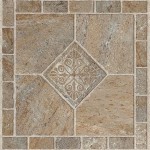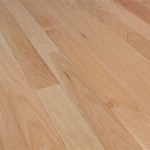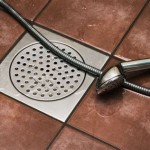Best Method For Cleaning Hardwood Floors
Hardwood floors add a touch of elegance and warmth to any home. Maintaining their beauty, however, requires proper care and cleaning. Utilizing the best cleaning methods will not only keep hardwood floors looking their best but also extend their lifespan significantly. This article outlines the most effective strategies for maintaining pristine hardwood floors.
1. Regular Dry Cleaning: The Foundation of Hardwood Floor Care
Preventing dirt and grit buildup is the first line of defense against scratches and dullness. Regular dry cleaning is essential for removing these abrasive particles. Sweeping with a soft-bristled broom is a simple yet highly effective method for daily cleaning. Microfiber dust mops also offer excellent dust and hair pick-up, trapping particles rather than simply pushing them around. For larger areas, consider using a vacuum cleaner with a hardwood floor attachment, ensuring the beater bar is turned off to avoid scratching the floor's surface.
The frequency of dry cleaning depends on the level of foot traffic and the presence of pets. High-traffic areas may benefit from daily sweeping or dust mopping, while less frequently used rooms can be cleaned two to three times a week. Incorporating regular dry cleaning into a routine will minimize the need for more intensive wet cleaning methods.
2. Effective Wet Cleaning: Addressing Spills and Deeper Cleaning
While dry cleaning removes surface debris, periodic wet cleaning is necessary to address spills, sticky residues, and ingrained dirt. However, excessive moisture is detrimental to hardwood floors, potentially causing warping and discoloration. The key to effective wet cleaning is using minimal moisture and drying the floor immediately.
A damp mop, rather than a sopping wet one, is crucial. Wring out the mop thoroughly until it is only slightly damp. Specialized hardwood floor cleaners are recommended over general-purpose cleaners, as they are formulated to clean effectively without leaving a residue. Plain water can also be used for damp mopping, but it may not be as effective at removing stubborn dirt or sticky spots. After damp mopping, dry the floor immediately with a clean, dry cloth or microfiber mop. This prevents water from seeping into the wood and causing damage.
Avoid using steam mops on hardwood floors unless the manufacturer explicitly states they are safe for such use. The high heat and moisture generated by steam mops can damage the wood and its finish.
3. Addressing Specific Stains and Damage: Targeted Solutions for Common Issues
Certain stains and damages require specific treatment beyond regular cleaning. For water spills, immediate blotting with a dry cloth is essential. For sticky substances like gum or food spills, gently scrape them off with a plastic scraper or credit card, taking care not to scratch the floor's surface. For stubborn stains, a slightly damp cloth with a mild hardwood floor cleaner can be used, followed by immediate drying.
Addressing scratches and scuff marks often requires specialized products like wood floor repair markers or filler pens. Deeper scratches may necessitate professional refinishing. Preventing such damage in the first place is always the best approach. Using protective felt pads under furniture legs, placing mats in high-traffic areas, and avoiding high-heeled shoes indoors can significantly reduce the risk of scratches and scuffs.
Regularly inspecting the floors for signs of wear and tear, addressing spills promptly, and following the manufacturer's recommended cleaning guidelines will help maintain the beauty and longevity of hardwood floors.
Selecting the appropriate cleaning method depends on the type of finish applied to the hardwood floor. Surface finishes, such as polyurethane, are more resistant to moisture than penetrating finishes like oil. It's crucial to identify the type of finish and use compatible cleaning products and methods to avoid damage.
Maintaining the appropriate indoor humidity levels also contributes to the longevity of hardwood floors. Excessive dryness can cause the wood to shrink and crack, while excessive humidity can lead to warping. Using a humidifier during dry seasons and ensuring proper ventilation can help maintain optimal humidity levels, protecting the floor from damage.

How To Clean Hardwood Floors Reviews By Wirecutter

How To Clean Hardwood Floors Reviews By Wirecutter

The 5 Best Ways To Clean Hardwood Floors Chet S Cleaning

How To Clean Hardwood Floors Like A Pro

Products To Use For Mopping Wood Floors Bond Cleaning In Melbourne

How To Clean Hardwood Floors Eco Actions

2024 Best Tips For Keeping Your Hardwood Floors Clean And Polished

Avoid Water And Vinegar To Best Clean Wood Floors Bona Com

How To Clean Hardwood Floors Without Damaging Them

Naturally Clean And Shine Hardwood Floors The Ultimate Guide Flooring Design








